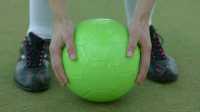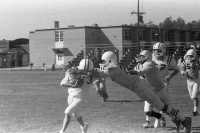Author Interviews, Brain Injury, Exercise - Fitness, Gender Differences, Pediatrics, University of Pennsylvania / 30.01.2021
Are There Sex Differences in Recovery from Sports-Related Concussions?
MedicalResearch.com Interview with:
Christina L. Master, MD, FAAP, CAQSM, FACSM
Professor of Clinical Pediatrics
Perelman School of Medicine at the University of Pennsylvania
Co-Director, Minds Matter Concussion Program
Pediatric and Adolescent Sports Medicine, Division of Pediatric Orthopedics
Attending Physician, Care Network - Karabots Center
The Children's Hospital of Philadelphia
Philadelphia, PA 19104
MedicalResearch.com: What is the background for this study?
Response: There have been multiple studies investigating potential sex differences in outcomes from concussion which have sometimes had conflicting results with some studies indicating that females take longer to recover than males and some studies reporting no difference in recovery between females and males, with most of these studies being conducted either retrospectively or prospectively in smaller cohorts. This large-scale multi-center prospective study in collegiate athletes provided an opportunity to compare females and males across comparable sports to examine both potential intrinsic or biologic factors (sex differences) or extrinsic (environmental or gender differences) that contribute to outcomes.
(more…)






 Sean C. Rose, MD
Pediatric sports neurologist and co-director
Complex Concussion Clinic
Nationwide Children’s Hospital
Assistant professor of Pediatrics
The Ohio State University
MedicalResearch.com: What is the background for this study? What are the main findings?
Response: The link between sub-concussive head impacts and declines in neurocognitive function has been reported by some studies, yet refuted by others. There is very little evidence that has been collected in children as they are sustaining these head impacts.
We initiated a multi-year study of youth football players to provide a more in-depth look at the question. We measured head impacts using helmet sensors during the 2016 football season. 112 players age 9-18 completed a battery of neurocognitive tests before and after the football season.
We found that neither the total burden of head impacts nor the intensity of individual impacts were associated with changes in testing performance from pre to post-season.
Sean C. Rose, MD
Pediatric sports neurologist and co-director
Complex Concussion Clinic
Nationwide Children’s Hospital
Assistant professor of Pediatrics
The Ohio State University
MedicalResearch.com: What is the background for this study? What are the main findings?
Response: The link between sub-concussive head impacts and declines in neurocognitive function has been reported by some studies, yet refuted by others. There is very little evidence that has been collected in children as they are sustaining these head impacts.
We initiated a multi-year study of youth football players to provide a more in-depth look at the question. We measured head impacts using helmet sensors during the 2016 football season. 112 players age 9-18 completed a battery of neurocognitive tests before and after the football season.
We found that neither the total burden of head impacts nor the intensity of individual impacts were associated with changes in testing performance from pre to post-season.



